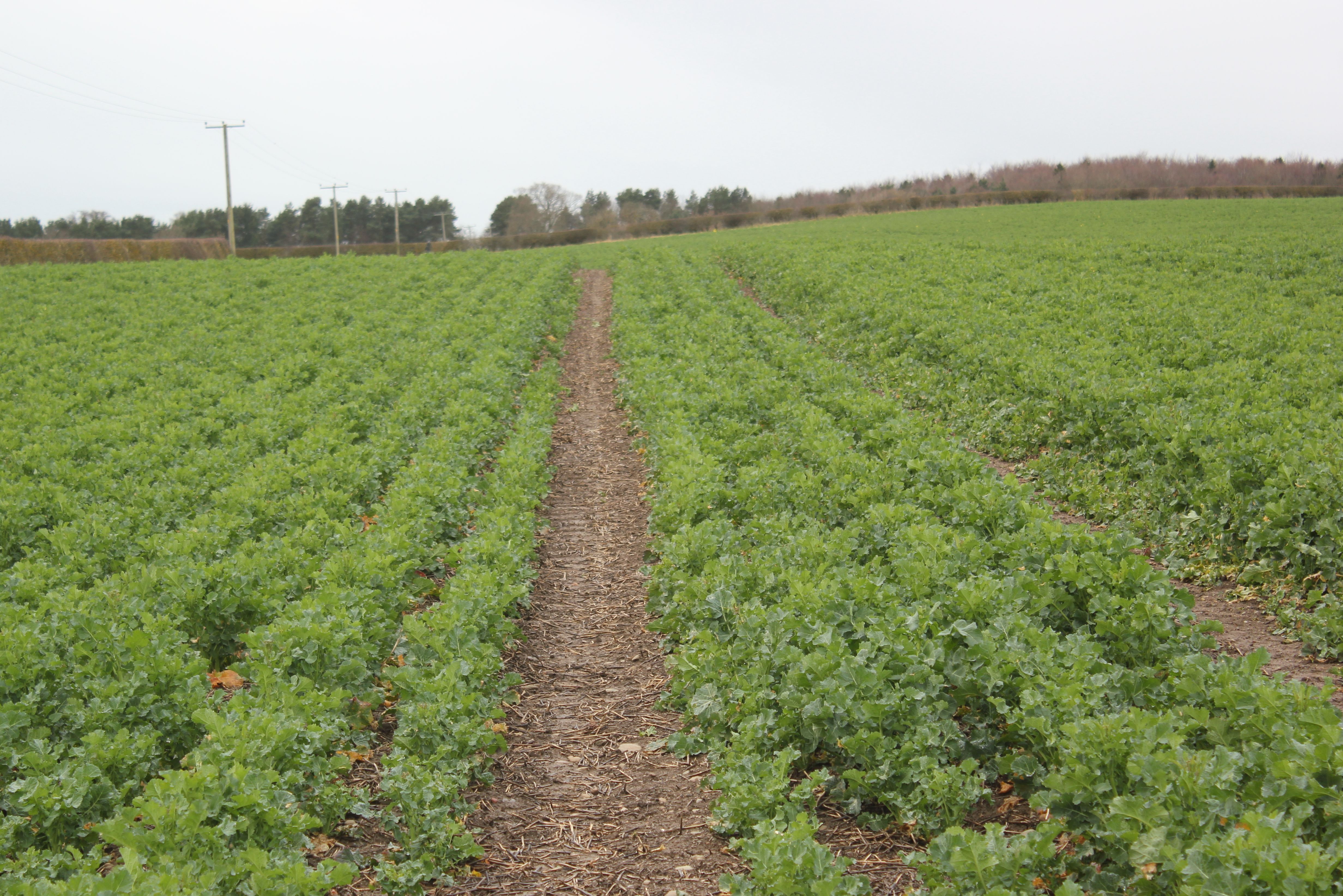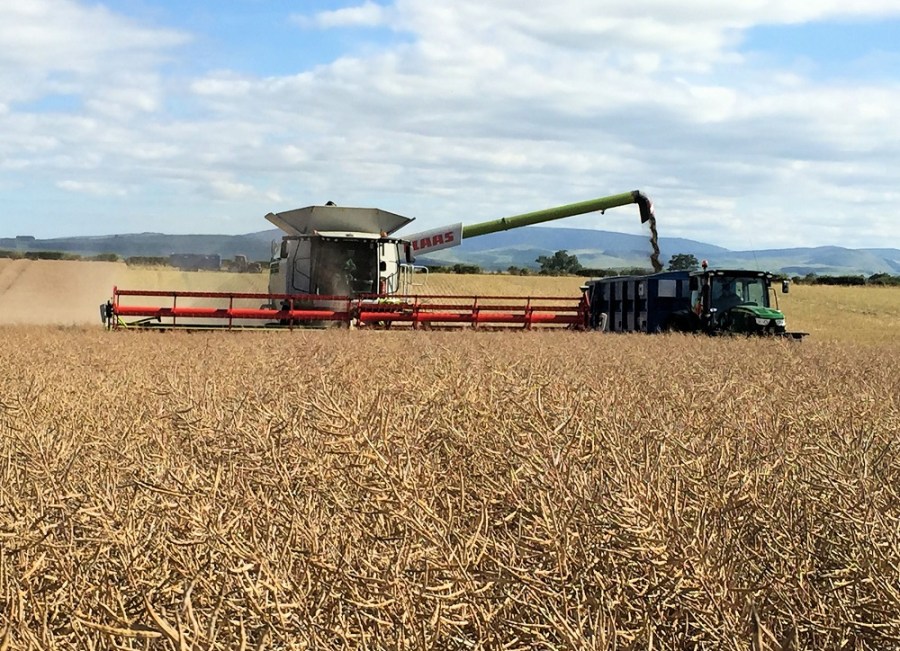Dekalb has brought to the field a newly recommended option that gives growers gross output, stem stiffness and pod shatter resistance – please welcome DK Expansion to the pack. CPM finds out more.
It’s a good variety and is the highest yielding hybrid in RL trials.
By Melanie Jenkins
Dekalb has a well-established reputation for producing oilseed rape varieties that growers try and love and stick with. Its hybrid programme has produced a range of household names that have been grown on farm time and again – so what’s the appeal of its latest variety, DK Expansion?
Yield, consistency, stiffness and the Dekalb traits of pod shatter resistance and double phoma resistance, are the key traits of DK Expansion that the industry has highlighted as making it a good variety to grow. Positioned as the highest yielding hybrid on the Recommended List, it has grower appeal.
According to Matthew Clarke, Dekalb breeder, it’s a very high yielding hybrid with consistently high yields in both UK regions. “We picked it out quite early in our trialling system and we now use it in the trialling programme as a check because of its performance.”

DK Expansion is the highest yielding hybrid variety on the AHDB Recommended List 2019.
It was DK Expansion’s similarity to DK Extrovert that brought it to the attention of Frontier, according to Chris Piggott. “DK Extrovert is a farmer favourite and DK Expansion is similar while having progressed by adding yield and addressing DK Extrovert’s weakness, which was that it was a big variety but not as stiff in the stem.”
Frontier, which is currently the exclusive supplier of DK Expansion, has had the variety in its own trials. “It was in our trails last year and it was in the top third of all varieties in the trials in terms of gross output and was consistent across the three trials sites (Lincs, Peterborough and Yorks) it was at,” explains Christine Lilly of Frontier.
Its consistency across regions is something Will Vaughan-France, Dekalb technical specialist, agrees with. “We’ve seen no regional variation so far and it seems to perform well across a range of sites. We’re confident with it on any soil type that suits OSR production but it’ll deliver best on moisture-retentive soils that will keep it alive the longest.”
Its drilling window is fairly wide, according to Will. “I’d feel comfortable drilling it from mid Aug onwards and it can be drilled into mid Sept if the conditions are good – something which has become very important with OSR now.”
Putting flea beetle to one side, Will suggests that the target plant count should still be 25-30 plants/m². “So seed rate should be appropriate to that – which might be 40 or 60 seeds/m².”
It’s a relatively fast developing variety, emerging quickly in the autumn, says Matthew. “It’s not as early flowering as some of the earliest material, but is about in the middle in terms of flowering timing and then is relatively early to mature.”
It has quite a high level of autumn biomass, according to Christine. It’s vigorous in the autumn and from what she’s seen, it was one of the earliest developing varieties to start stem extension in the spring and get away – something that was consistent across all trial sites.
Chris agrees that its autumn and spring vigour has been particularly strong in Frontier trials. “The speed of development is very good – which is a real positive, bearing in mind the problems people are experiencing.”
According to Will, though it has early-mid spring development, when it grows, it grows quickly. “So, it may need a growth regulator in the spring, but this will be more about canopy structure and light penetration, rather than for stem stiffness.”
It has pod shatter resistance, double phoma stem canker resistance and its light leaf spot rating is quite good, says Matthew. “It’s LLS score has improved, which we’ve seen in various trials. This is something we expected as we weren’t sure the earlier data was quite correct. So there’s been a steady improvement in its rating which is quite interesting.” He highlights that they were surprised when the first set of official trial data rated it lower than expected. “We thought it was quite good and since it’s gone into the RL system, it’s rating has got higher and higher each year – nearer to what we were expecting.”
DK Expansion has the RLM7 gene and is polygenic, which is what gives it such strong phoma resistance, says Wills. This is something growers may be familiar with from previous Dekalb varieties.
At Frontier’s Haywold trial site, it was one of the cleanest varieties, according to Christine. “It gives growers the insurance in the autumn in terms of spray timings and the number of sprays.”
Alongside its good disease resistance profile, it’s also very stiff, explains Matthew. “Though it’s quite tall and vigorous, it’s also stiff. So, it doesn’t fall into the trap of the more vigorous varieties in terms of lodging.”
According to Will, though a relatively tall variety, it stands well and is able to support a high yielding canopy. “This means it can be pushed in places for yield and will be robust against the stresses growers have growing OSR at the moment.”
DK Expansion was one of the taller varieties Frontier had in trials. “We did see a bit of lodging at the Peterborough site, but this is not an issue, it just means that growers should avoid excessively high seed rates and that the variety might benefit from a PGR type product,” explains Christine. “This was an earlier drilled site and it had high levels of establishment. It was on fertile soil and probably had around 50 seeds/m² and was a big crop going into winter. But we didn’t see any lodging at the other two sites.”
So what’s availability looking like? According to Chris, there’ll be good availability of it with the option of adding seed treatments. One of these options is Lumiposa (cyantraniliprole), the new treatment from Corteva Agriscience, he says. “This will be for where people want something to help with flea beetle and so is an advantage for this variety.”
Chris is anticipating the variety to take its market share from many other different hybrids and perhaps some conventionals where growers are looking for a faster developing option. “It seems like the natural progression from DK Extrovert and there’s no obvious weaknesses to put people off.”
The main appeal for Christine is DK Expansions’ consistency across all of Frontier’s trial sites. “We have it in trials again for 2019,” she adds. “It’s a good variety and is the highest yielding hybrid in RL trials. So, it’s performed consistently in those trials and over 2016, 2017 and 2018 it’s been within two percentage points of itself each year – so is consistent over the years too.”
Expanding area of DK Expansion in the Scottish Borders
DK Expansion has proven itself so popular with one grower in the Scottish Borders, that he not only grew a good amount of it last year, but has grown it again for harvest 2019, and has upped the area to 300ha – 48% of his total OSR cropping.
David Fuller, arable manager at McGregor Farms, Coldstream, manages around 3200ha of winter wheat, winter barley, winter OSR, vining peas, spring barley and rents out ground for potatoes, which involves an eight-course rotation with OSR every fourth year.
He points out that OSR is a very important break crop at McGregor Farms because of the short weather windows in the area. “We’re quite lucky that we don’t have the issues there are further south.
“We’re growing DK Expansion as it has good vigour, a high oil content, pod shatter resistance and good disease scores – it’s a progression on DK genetics,” explains David.
In the 2017/18 season, he grew 138ha of DK Expansion which was drilled in the last week of Aug – some behind winter wheat and some behind winter barley – in one pass using a Simba SL. “It’s not a subsoiler or a drill but a system we’ve devised. It’s done in one pass, saving on time and labour.” The crop went into sandy silt loams and clay loams and established very well, with good autumn growth. “We had a moist Sept, so it established nicely and the herbicides worked well,” explains David “But we never get very bold crops here due to the colder weather.”
It had a pre-emergence herbicide – graminicide – an LLS spray of Proline (prothioconazole) and tebuconazole for growth regulation, as well as slug pellets post drilling as a precaution.
In the spring, it was very slow to develop due to the arrival of the Beast from the East. “This caused us a headache and it had an exceptionally short flowering period of three weeks, but then it grew so rapidly it split the stems.”
The crop had a spray for LLS as soon as it hit welly height, then it had trace elements of boron, magnesium and molybdenum. At yellow bud it had tebuconazole and Amistar mix (azoxystrobin), but didn’t need a PGR to control the straw height as the weather had been so cold – so PGRs were just used for canopy manipulation. It also had a sclerotinia spray and Mavrik (tau-fluvalinate) insecticide as David had seen some weevil in the crop which would make holes in the pods.
In total it had 200kgN/ha with sulphur in the spring over two passes. “This was variably applied with our Yara N-Sensor, which is measured according to the GAI of the crop,” explains David.
Harvesting began on the 1 Aug and was completed by 11 Aug “Oil contents were quite good at 45-46%, considering the short growing period.” The farm averaged 4.9t/ha over six OSR varieties – which was above average, but DK Expansion averaged 5.05t/ha. “It was quite strange as it had such a short growing period and everything was rushed in the spring and then dry and droughty, he says. “It surprised us and we were happy with it.”
So this year, David has upped the amount of DK Expansion on the farm to 300ha. It was drilled in the last week of Aug 2018 using the same system as the previous crop. “We tend not to drill too early, or we’d get too forward a crop. We tend to start around 21 Aug if we can and last year harvest allowed us to do that.”
It had a pre-em again and as it was a drier start, it had one pass with slug pellets and a graminicide at the end of Sept, then Toledo (tebuconazole) plus Proline (prothioconazole) to help growth regulation and for LLS and phoma control. “We had a very warm Feb, so we variably applied PGRs but then the weather went really cold,” says David.
In mid April the crop was just starting to flower. “It’s looking quite nice, though it did rush away in Feb, but it had a few cold weeks on it which definitely slowed it down. So about a quarter of it is in flower now.”
It had two applications of N which totalled 160kg N/ha. “The Yara N-Sensor decided the rate – the warm spell must have meant it needed less N than the previous year and we’ve been using the sensor for the past 10 years now.”
David plans to grow DK Expansion for a while yet or until something slightly better comes along. “We used to grow a lot of DK Exalte, DK Extrovert and Excalibur – each for about four to five years – so we don’t jump in and out of varieties.”
DK Expansion at a glance





